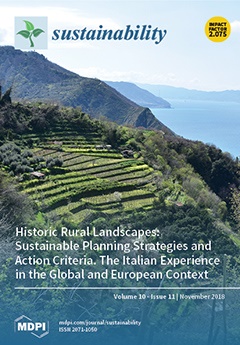Ver ítem
- xmlui.general.dspace_homeCentros Regionales y EEAsCentro Regional Catamarca - La RiojaEEA CatamarcaArtículos científicosxmlui.ArtifactBrowser.ItemViewer.trail
- Inicio
- Centros Regionales y EEAs
- Centro Regional Catamarca - La Rioja
- EEA Catamarca
- Artículos científicos
- Ver ítem
Greenhouse gas emissions from beef grazing systems in semi-arid rangelands of central Argentina
Resumen
The livestock sector can be a major contributor to the mitigation of greenhouse gas (GHG) emissions. Within the sector, beef production produces the largest proportion of the livestock sector’s direct emissions. The objective of this study was to assess the on-farm GHG emissions in semi-arid rangelands in Argentina and to identify the relationship between emissions and current farm management practices. A survey recorded detailed information on farm
[ver mas...]
The livestock sector can be a major contributor to the mitigation of greenhouse gas (GHG) emissions. Within the sector, beef production produces the largest proportion of the livestock sector’s direct emissions. The objective of this study was to assess the on-farm GHG emissions in semi-arid rangelands in Argentina and to identify the relationship between emissions and current farm management practices. A survey recorded detailed information on farm management and characteristics. Assessments of GHG emissions were based on the Intergovernmental Panel on Climate Change (IPCC) Tier 2 protocols. The relationship between farm management and GHG emissions were identified using general linear models. Cluster analysis was used to identify groups of farms that differed from others in emissions and farm characteristics. Emissions per product sold were low on farms that had improved livestock care management, rotational grazing, received technical advice, and had high animal and land productivities. Emissions per hectare of farmland were low on farms that had low stocking rates, a low number of grazing paddocks, little or no land dedicated to improved pastures and forage crops, and low land productivity. Our results suggest that the implementation of realistic, relatively easy-to-adopt farming management practices has considerable potential for mitigating the GHG emissions in the semi-arid rangelands of central Argentina.
[Cerrar]

Autor
Nieto, Maria Isabel;
Barrantes Díaz, Olivia;
Privitello, Liliana;
Reine Viñales, Ramón;
Fuente
Sustainability 10 (11) : 4228 (2018)
Fecha
2018-11
Editorial
MDPI
ISSN
2071-1050
Formato
pdf
Tipo de documento
artículo
Palabras Claves
Derechos de acceso
Abierto
 Excepto donde se diga explicitamente, este item se publica bajo la siguiente descripción: Creative Commons Attribution-NonCommercial-ShareAlike 2.5 Unported (CC BY-NC-SA 2.5)
Excepto donde se diga explicitamente, este item se publica bajo la siguiente descripción: Creative Commons Attribution-NonCommercial-ShareAlike 2.5 Unported (CC BY-NC-SA 2.5)


